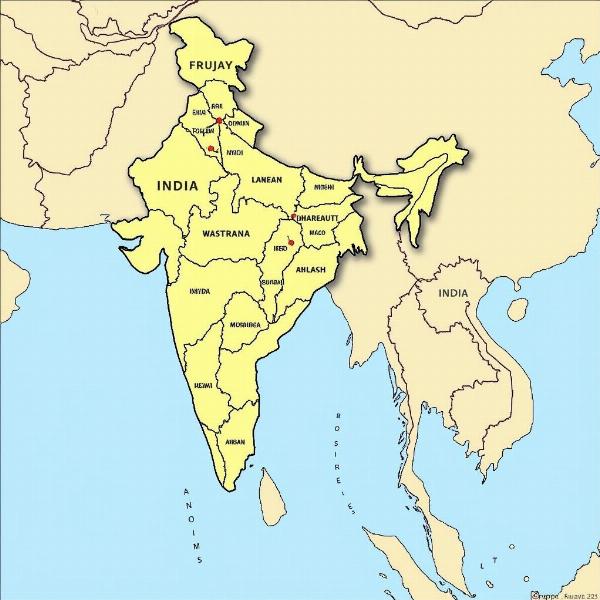West Bengal, a vibrant state in eastern India, is often referred to as “Bangla” or “Bengal” in colloquial conversation. But what exactly does “West Bengal” mean in Hindi? The direct translation is “पश्चिम बंगाल” (Pashchim Bangal), where “Pashchim” means West and “Bangal” refers to Bengal. This name reflects its geographical location on the western side of the historical Bengal region, which was partitioned during India’s independence in 1947. Understanding the meaning of the name opens a window into the state’s rich history, culture, and significance in the Indian subcontinent.
Unveiling the Meaning of “Pashchim Bangal”
The term “Pashchim Bangal” is a straightforward combination of two Hindi words. “Pashchim,” derived from Sanskrit, denotes “west” or “western,” indicating the state’s position relative to the original, undivided Bengal. “Bangal,” also rooted in Sanskrit, represents the historical region of Bengal, known for its fertile land, artistic traditions, and intellectual prowess. Together, these words paint a clear picture of West Bengal as the western portion of the greater Bengal region.
 Map of West Bengal
Map of West Bengal
“Pashchim Bangal” encapsulates the essence of West Bengal’s identity as a distinct entity while acknowledging its historical connection to the larger Bengal region. This name is not merely a geographical marker, but a symbol of the state’s unique cultural and linguistic heritage, shaped by its history and the people who call it home.
The Cultural Significance of West Bengal’s Name
The name “West Bengal” carries profound cultural implications, reflecting the state’s rich and diverse heritage. It is a land steeped in artistic traditions, from the vibrant colours of Durga Puja to the soulful melodies of Rabindra Sangeet. The state’s literary legacy is equally impressive, with renowned figures like Rabindranath Tagore contributing significantly to Bengali literature.
The name “West Bengal” itself acts as a constant reminder of the state’s shared history and cultural connections with Bangladesh, the eastern part of the former Bengal region. This shared heritage fosters a sense of kinship and cultural exchange between the two regions, despite their political separation. Do you feel the pull of shared history when you hear the name “Bangla”?
West Bengal: A Land of Diversity and Harmony
Beyond its literal meaning, “West Bengal” represents a melting pot of cultures, languages, and religions. The state is home to a diverse population, contributing to a vibrant tapestry of traditions and customs. From the bustling metropolis of Kolkata to the serene tea gardens of Darjeeling, West Bengal offers a unique blend of urban and rural experiences.
Dr. Ananya Chatterjee, a prominent historian specializing in Bengali culture, notes, “The name ‘West Bengal’ carries with it the weight of history, reflecting the region’s journey through partition and its subsequent development as a distinct cultural entity. It symbolizes resilience, creativity, and a deep-rooted connection to the land.”
Professor Biswajit Sen, a linguist at the University of Calcutta, adds, “The term ‘Pashchim Bangal’ perfectly captures the state’s geographical location while acknowledging its linguistic and cultural ties to the broader Bengal region. It’s a name that resonates with both history and identity.”
Conclusion: More than Just a Name
“West Bengal,” or “Pashchim Bangal” in Hindi, is more than just a name on a map. It represents a vibrant state with a rich history, diverse culture, and a strong sense of identity. Understanding the meaning of the name allows us to appreciate the state’s significance within the Indian subcontinent and its enduring connection to the historical Bengal region.
FAQ
- What is the literal translation of West Bengal in Hindi? The literal translation is “पश्चिम बंगाल” (Pashchim Bangal).
- What does “Pashchim” mean? “Pashchim” means West.
- What does “Bangal” signify? “Bangal” refers to the historical region of Bengal.
- When was Bengal partitioned? Bengal was partitioned in 1947 during India’s independence.
- What is the cultural significance of West Bengal’s name? It signifies the state’s shared history and cultural connections with Bangladesh.
siliguri meaning in hindi
durga meaning in hindi
first of fall meaning in hindi
hindi meaning of south
Meaning-Hindi.in is your premier destination for professional Hindi translation services, specializing in various domains, including business, legal, technical, website localization, educational, and urgent translations. Our expertise in diverse fields like gappe meaning in hindi ensures accurate and culturally sensitive translations for all your needs. Contact us today for a seamless translation experience: Email: [email protected], Phone: +91 11-4502-7584. Meaning-Hindi.in – Bridging the language gap, connecting cultures.